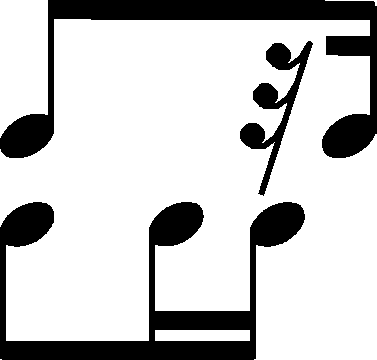



Issues : Errors in FE
|
b. 20
|
composition: Op. 44, Polonaise in F♯ minor
..
Out of the three source versions of the double grace notes present both before the 3rd trill and after it, it is only one that is correct – A
In the discussed bar the missing category imprint: Differences between sources issues: EE revisions , Errors in FE , Errors in GE , GE revisions , Errors repeated in EE |
||||||
|
b. 26
|
composition: Op. 44, Polonaise in F♯ minor
..
The missing staccato dots at the end of the bar in FE (→EE) are supposedly an oversight of the copyist or of the engraver. category imprint: Differences between sources issues: Errors in FE |
||||||
|
b. 29
|
composition: Op. 44, Polonaise in F♯ minor
..
We give the rhythm of the 1st crotchet in the bar after the rhythmically correct version of GE, conveying almost certainly the text of [A]. FE1 contains an erroneous rhythm missing one demisemiquaver – category imprint: Differences between sources issues: Errors in FE , FE revisions |
||||||
|
b. 29-30
|
composition: Op. 44, Polonaise in F♯ minor
..
The missing slur in FE is almost certainly an oversight of the copyist or of the engraver, repeated in EE. In the main text we follow GE. category imprint: Differences between sources issues: Errors in FE |
||||||
|
b. 31
|
composition: Op. 44, Polonaise in F♯ minor
..
FE1 overlooked a quaver flag to the 2nd R.H. octave, f-f1. The mistake was repeated in EE1, and also omitted were the dots prolonging the e category imprint: Interpretations within context; Differences between sources issues: EE revisions , Errors in FE , Errors in EE , FE revisions , Errors repeated in EE |

 -B and A
-B and A -B
-B in
in  in
in  (the scheme preserves the alignment of the R.H. part with respect to the L.H. part). According to us, it is most probably an unfinished notation of the rhythm we can see in
(the scheme preserves the alignment of the R.H. part with respect to the L.H. part). According to us, it is most probably an unfinished notation of the rhythm we can see in  -e
-e